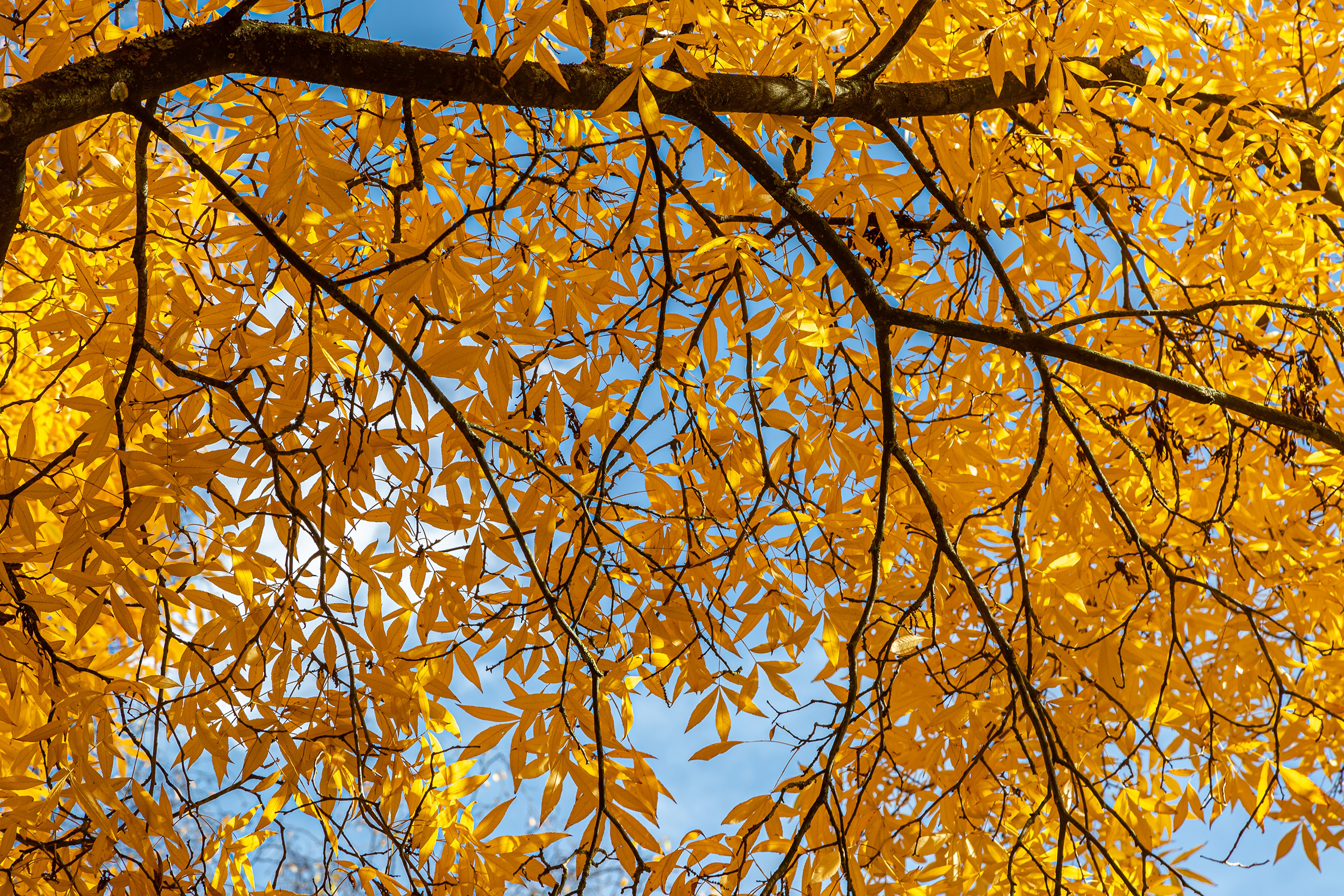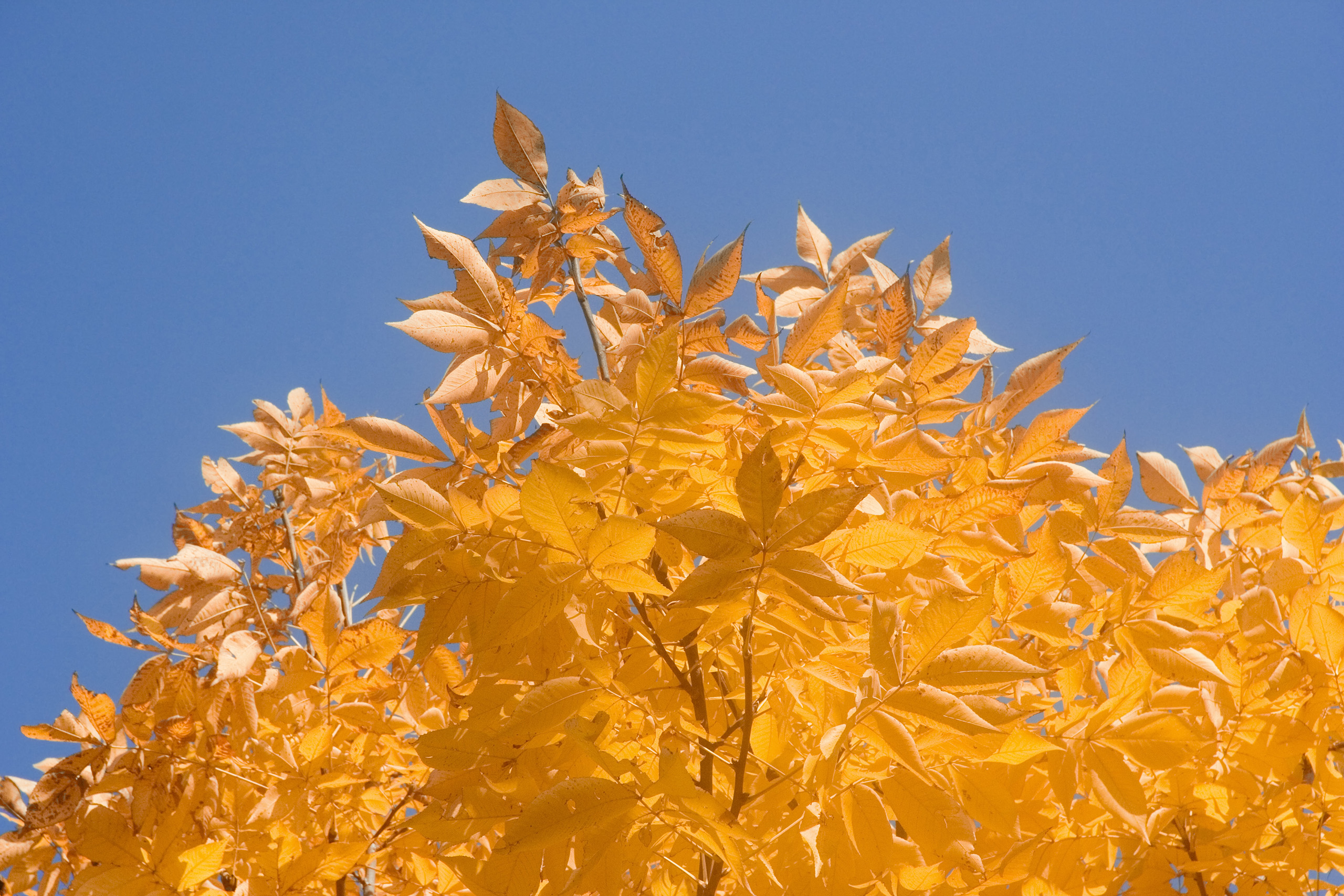
Autumn colour across The Savill Garden

Published by
John Anderson
Keeper of the Gardens
Nov 12 2024
Share this article
A walk around The Savill Garden or Valley Gardens – not least Chapel Wood Arboretum during the month of October is one of the most rewarding times of year to appreciate the autumn colours.
Hickories
In The Savill Garden the showstoppers are the Chinese Hickory (Carya cathayensis) planted by the former Keeper of the Gardens, Mark Flanagan, from a collection made in China. By mid-October the pale green foliage turns a canary-yellow.
On a cloudless sunny day under a blue sky this young tree of 5-6m (16 – 19ft) is a colourful sight. Given this is a rare tree, seldom seen out of plant collections, perhaps one day it will more prolific as it deserves wider plantings.
There are also several highlight specimens native to North America in Summer Wood, including Carya ovata, C. glabra & C. cordiformis, all of which are large specimens and produce excellent autumn colour similar to the above Chinese species.

Carya ovata
Japanese Vine
For climbing plants with strong autumnal colours in The Savill Garden then a highlight is certainly the Japanese Vine (Vitis coignetiae).
This is a deciduous climber that needs space and something big to climb over.
This is precisely what it has at two locations in Spring Wood. The large Sweet Chestnut (Castanea sativa) above the Rose Garden on the edge of the entrance to Spring Wood has a large spreading Japanese Vine that displays not just rich red colours, but with its large leaves, it makes the plant stand out even more.
What is not too obvious is the fruiting Kiwi Plant (Actinidia chinensis var deliciosa) growing with the Japanese Vine.
For the second location, there is a Japanese Vine scrambling up a mature Oak tree (Quercus robur) on the boundary fence about halfway into Spring Wood.
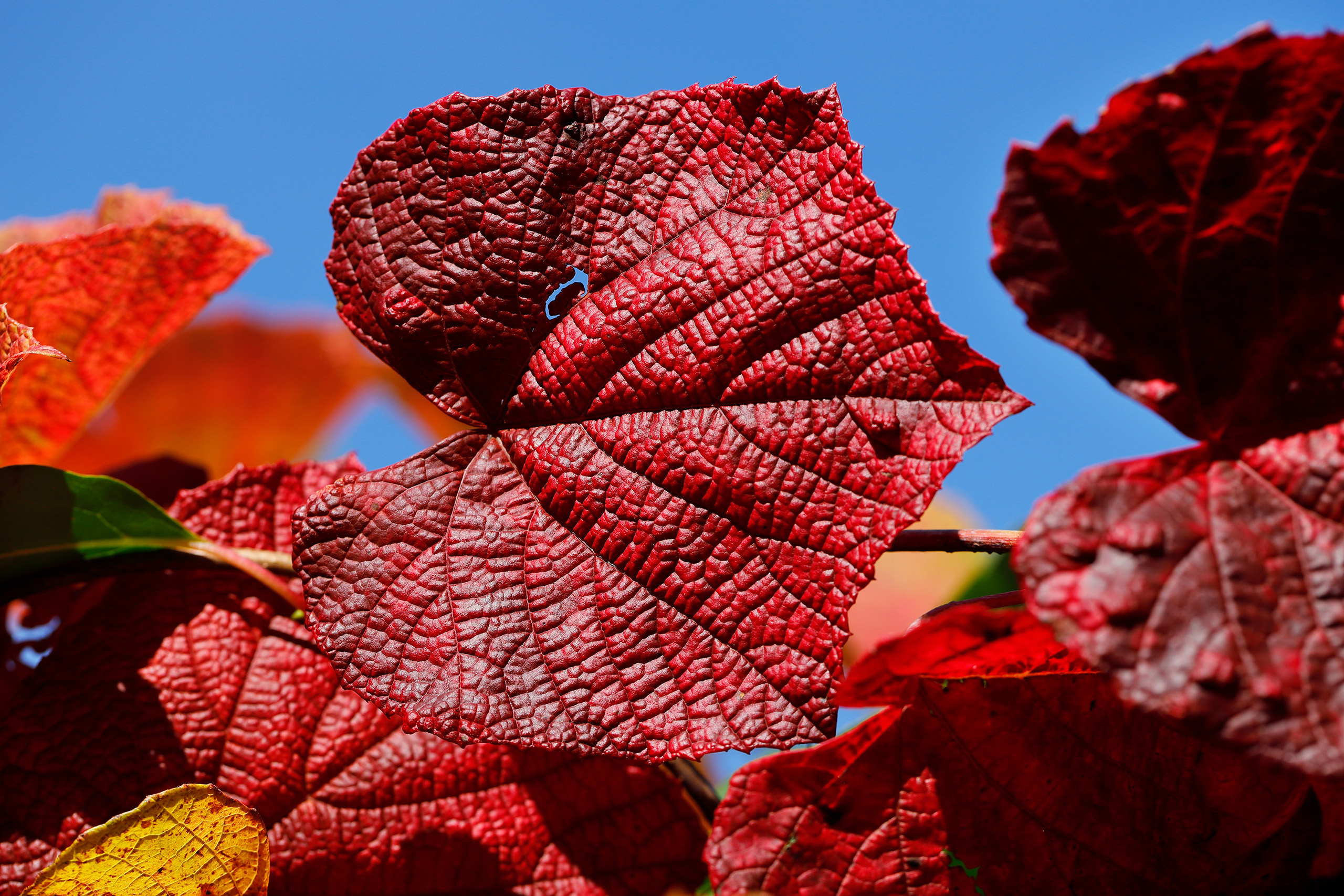
Vitis coignetiae
Japanese Maples
Just outside the Hidden Garden where we grow a large collection of our National Collection of Hardy Ferns, are two rather large Japanese Maples (Acer palmatum ‘Sango-kaku’).
These were formerly grown as A.p. ‘Senkaki’, a very distinctive Japanese Maple with golden-yellow foliage in autumn followed especially when young with shrimp-pink new shoots which continue to brighten up the long days of winter.
On more mature specimens the pink colours of the new stems slightly fade.
The two specimens on display by the Hidden Garden draw the eye when crossing the Casson bridge or standing by the viewing area near the entrance into the Garden.
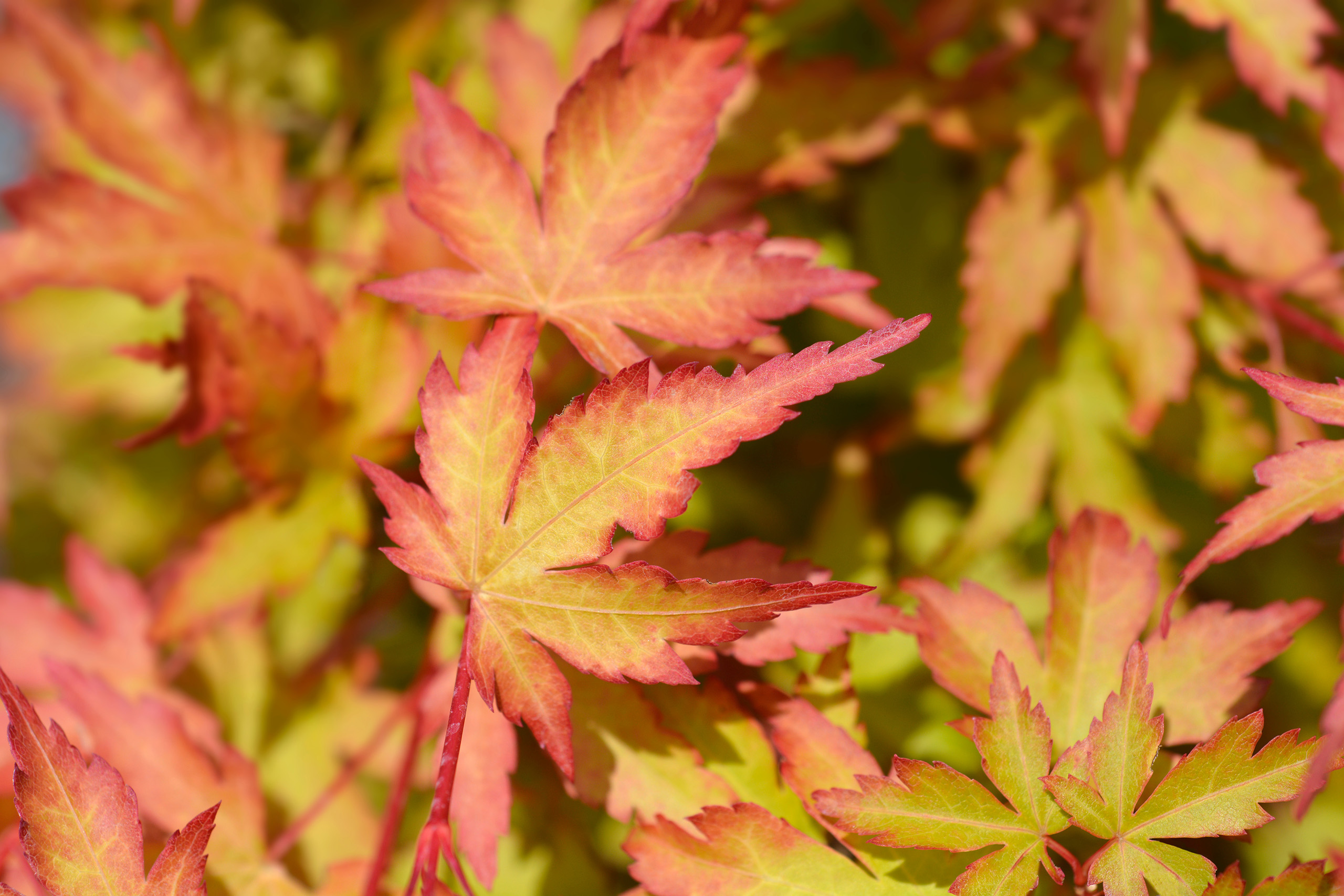
Acer palmatum ‘Sango-kaku’
Tupelo trees
As with most years, the autumnal colour range from the Tupelo trees (Nyssa sylvatica) is wide and varied.
This includes a spectrum of yellow and orange from the young Nyssa sylvatica ‘Valley Scorcher’ at the edge of Orchard 7 opposite the Alpine Meadow.
There are also two mature Nyssa at the top of the same border that display good tints of orange-reds.
Another favourite that encompasses all the fiery colours in one display is the young Nyssa sylvatica ‘Wisley Bonfire’, a good tree for autumn colour, that is always consistently brilliant even as a young tree.
This tree can be seen in the plantings carried out in 2024 behind the fence line at Obelisk Pond, where we have planted numerous young trees for the best of the autumn colours, as well as new plantings in Valley Gardens around South Breakheart.
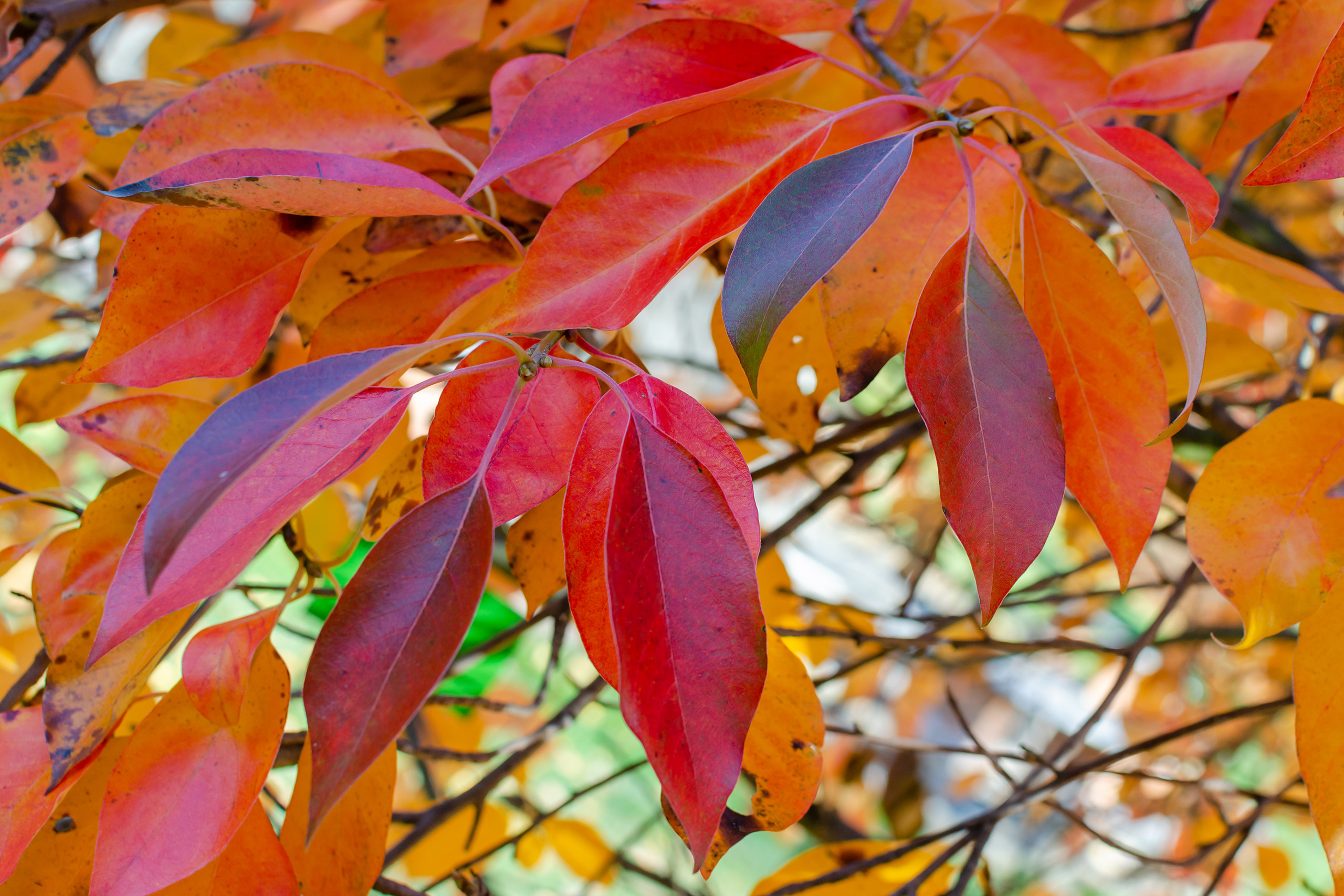
Nyssa sylvatica
Sweet Gums
No garden the size of The Savill Garden would be without at least one or two Sweet Gums (Liquidambar styraciflua).
This is one of the best trees for late autumn colour lasting well into November.
The colours can range from reds to purple depending on the clonal name.
All are hardy, resilient trees and ideal for large gardens, tree avenues and as a single specimen in a lawn or border.
The best and most familiar is Liquidambar styraciflua ‘Worplesden’ which can be easily identified as it holds onto its seed pods when in autumn colour.
Another favourite is L.s. ‘Lane Roberts’ and ‘Palo Alto’, both with good red displays.
We also have two special named clones originating at Windsor.
One is L. styraciflua ‘Savill Torch’, propagated from the original tree which blew down in the Great Storm of 1987, and now growing in The Savill Garden and Chapel Wood Arboretum.
The second is the more recently named L. styraciflua ‘Royal Lodge’ which is has one of the best reds for autumn colour and can be found in The Savill Garden, Valley Gardens and around Obelisk Lawn.
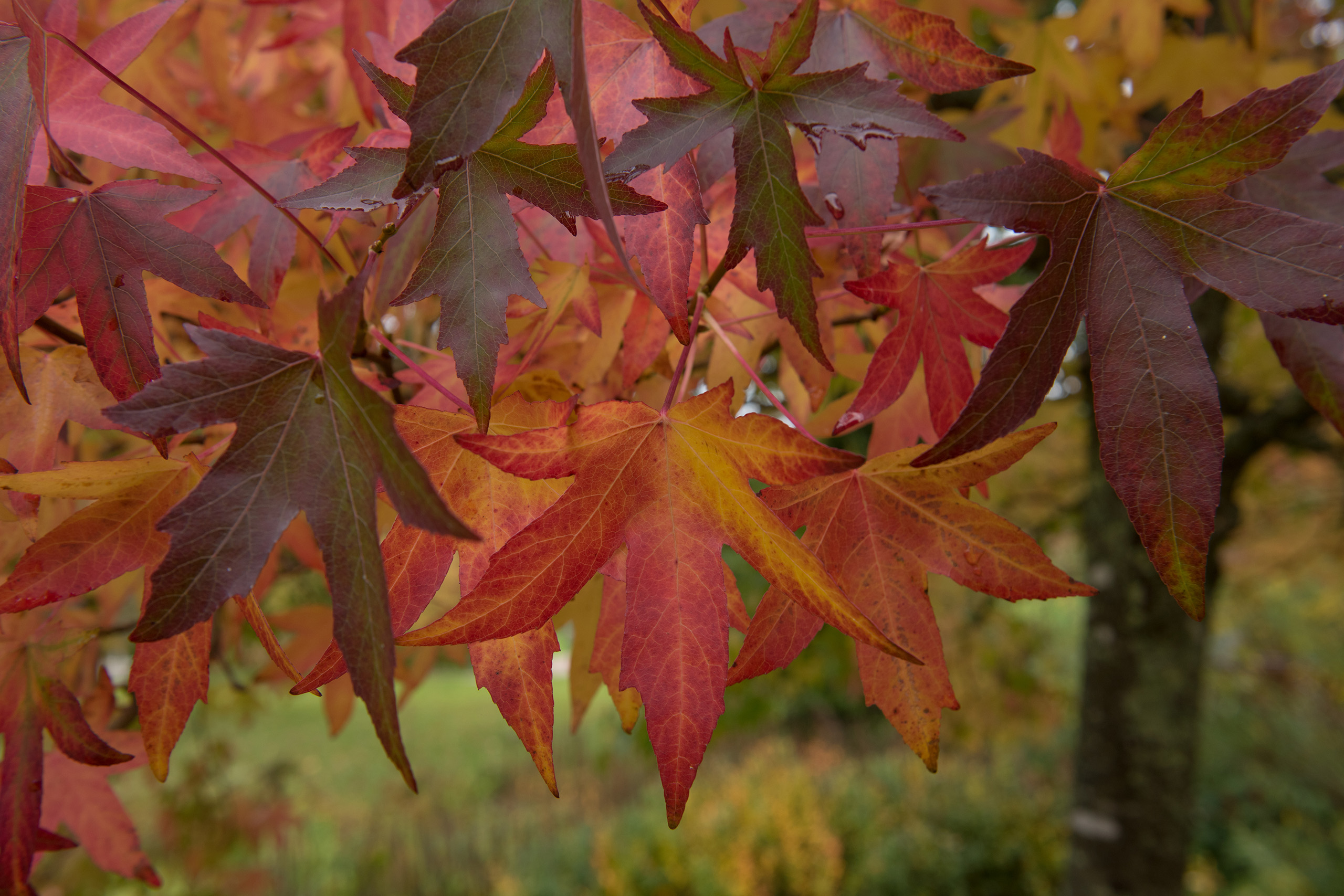
Liquidambar styraciflua ‘Worplesden’
Share this article



